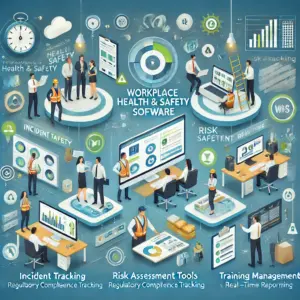
Ever wondered what turns an idea into a perfectly executed project? Whether it is a towering skyscraper, a commercial fit-out, or a residential layout, every structure starts with a plan. A well-designed blueprint is the foundation of precision, guiding professionals through each stage of development with clarity.
The importance of a blueprint goes beyond mere drawing. It provides accurate measurements, structural details, and a clear roadmap for execution. Without one, miscommunication, design flaws, and costly delays become inevitable. A structured approach ensures efficiency, making every phase from concept to completion seamless. Let’s read them in detail.
Defining the Project Scope Clearly
Blueprints set the framework for a project’s scope by outlining dimensions, materials, and design specifics. They ensure every stakeholder, from engineers to contractors, aligns with the intended outcome. By detailing structural components and functional layouts, blueprints eliminate uncertainty, reducing errors and revisions.
This clarity allows teams to allocate resources effectively and ensures that expectations are met from the beginning. A well-defined project scope also helps prevent scope creep, where changes or additions disrupt timelines and budgets. With a clear layout, project managers can monitor progress and make informed decisions to keep the project aligned with the original plan.
Enhancing Accuracy in Execution
A well-defined blueprint translates conceptual designs into reality with high precision. Every dimension, fixture, and load-bearing element is accounted for, ensuring consistency throughout the build. Without accurate plans, deviations can lead to structural weaknesses or costly rework. The importance of a blueprint is evident in the way it guarantees alignment with design expectations, ensuring flawless execution.
Accuracy is particularly critical in large-scale developments, where even minor errors can lead to significant structural issues. By using precise measurements and clear instructions, these layouts enable construction teams to follow exact specifications, reducing risks and improving overall work quality.
Improving Resource Allocation
Efficient use of materials, labour, and time is crucial for any project’s success. Blueprints provide detailed specifications, allowing teams to source the right materials in advance. This prevents wastage and unexpected shortages, keeping the project within budget. With a clear plan, tasks can be scheduled efficiently, reducing downtime and unnecessary expenses.
Proper resource allocation also leads to better cost management. A well-prepared blueprint helps project managers estimate material quantities accurately, preventing over-ordering or underutilisation. By optimising resources, construction teams can maximise efficiency and maintain financial control throughout the project lifecycle.
Boosting Coordination Among Professionals
A project involves multiple teams working simultaneously. Blueprints act as a central reference point, ensuring architects, engineers, and builders remain on the same page. From electrical wiring to plumbing systems, each component integrates seamlessly when guided by precise schematics. This level of coordination prevents conflicts between different trades, fostering a smoother workflow.
Additionally, clear documentation ensures that each team understands its responsibilities and how their work interacts with others. This is particularly crucial in large-scale projects where overlapping tasks can lead to costly mistakes if not carefully managed. By following blueprints, teams can work efficiently, reducing the need for rework and keeping the project on schedule.
Ensuring Compliance with Regulations
Construction projects must adhere to industry standards and legal requirements. Blueprints incorporate necessary compliance measures, ensuring safety codes, zoning laws, and environmental regulations are met. A structured design minimises the risk of legal hurdles or structural inefficiencies, helping projects progress without setbacks.
Authorities often require blueprints for approval before construction begins. These documents demonstrate that the project meets safety and regulatory standards, expediting the approval process. Without proper documentation, delays and additional costs can arise, hindering progress and increasing financial risks.
Supporting Future Modifications and Maintenance
Projects do not end once construction is complete. Maintenance, renovations, and extensions rely on detailed blueprints for reference. They provide essential insights into structural integrity, electrical systems, and plumbing layouts, simplifying future modifications. This documentation ensures any upgrades align with the original design without compromising stability.
For building owners and facility managers, having access to original blueprints streamlines repairs and renovations. Whether upgrading electrical systems, expanding a space, or addressing wear and tear, these outlines serve as a crucial guide for making informed decisions. Without them, modifications may lead to inconsistencies or potential safety hazards.
Maximising Project Efficiency with Digital Blueprints
With advancements in technology, digital blueprints have become an integral part of modern construction. These interactive documents allow teams to access real-time updates, improving collaboration and efficiency. Digital formats also enhance accuracy by integrating 3D modelling, providing a clearer visual representation of the final structure.
Unlike traditional paper blueprints, digital versions reduce the risk of misinterpretation and loss. Cloud-based storage ensures all stakeholders have instant access to the latest plans, preventing delays caused by outdated information. By embracing digital solutions, construction teams can streamline workflows and enhance productivity.
The importance of a blueprint cannot be overlooked in any construction project. They act as a roadmap, ensuring efficiency, accuracy, and compliance at every stage. Whether constructing a new building or renovating an existing space, having a well-defined plan is essential for achieving precision in execution. Investing in clear, detailed blueprints streamlines operations, making every project a seamless success.















